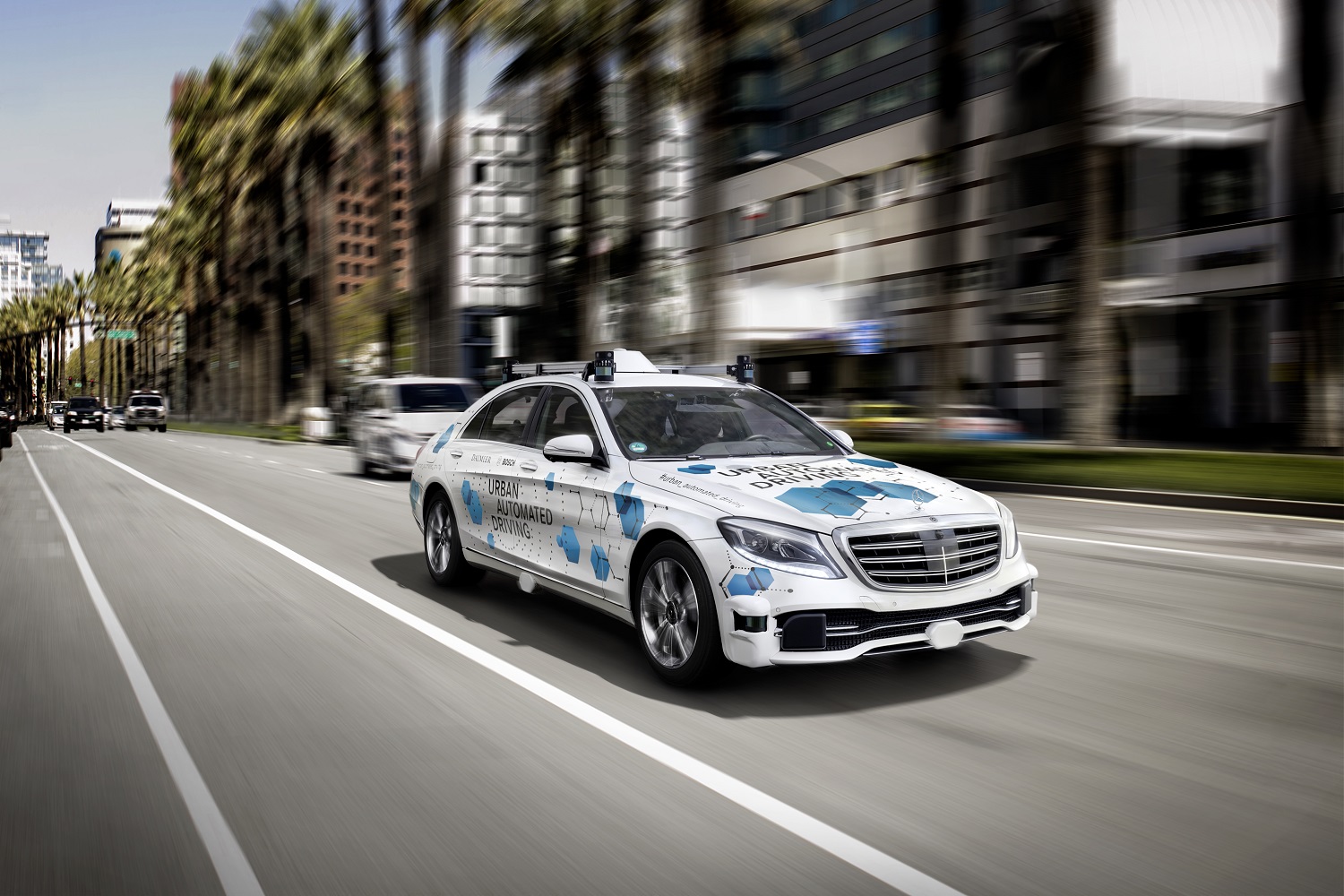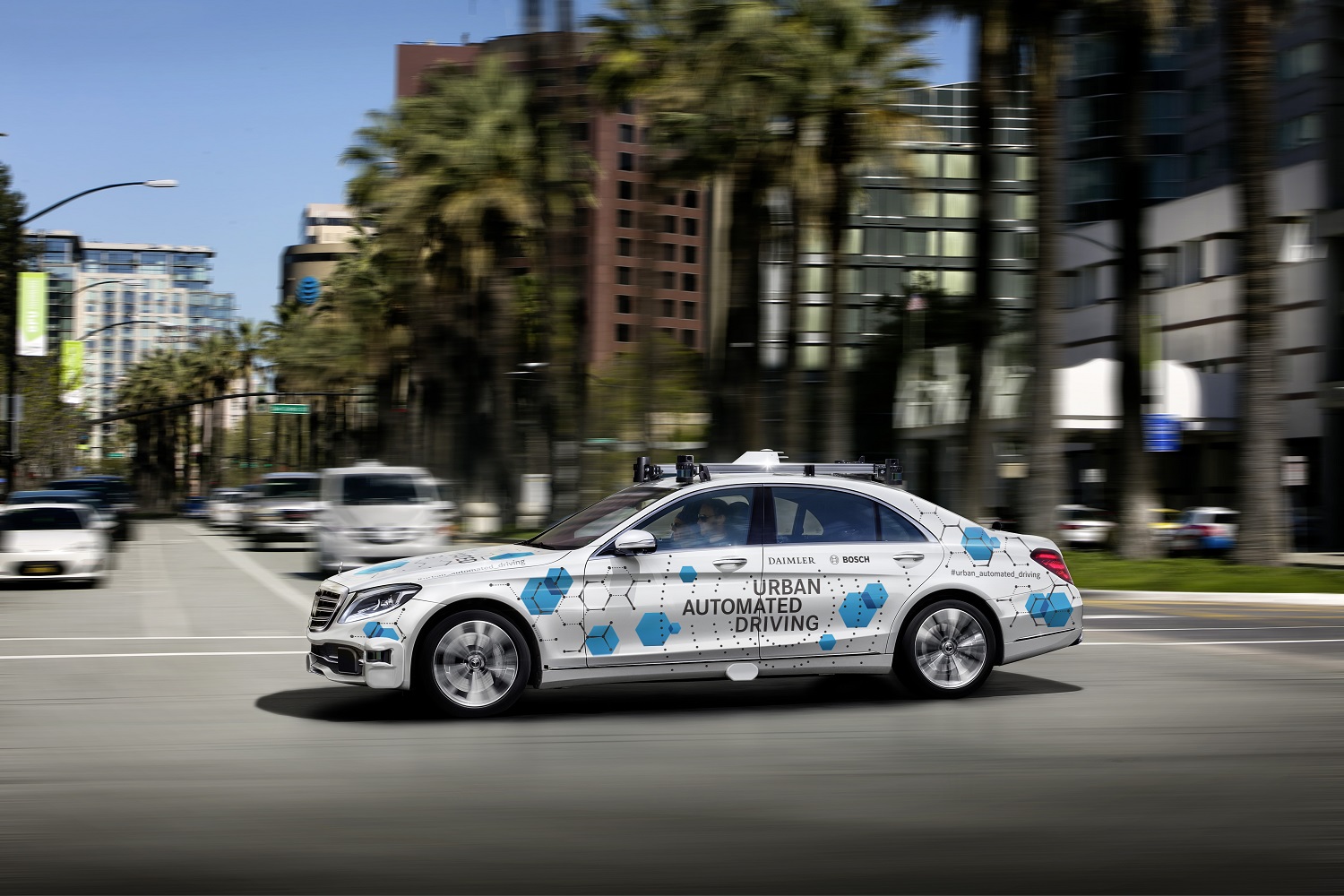In October 1986, when Bosch and Mercedes-Benz parent company Daimler began working on a large-scale autonomous car project, the technology seemed light-years away from merging into the mainstream. There were ups and downs, but the three decades of hard and persistent work are about to pay off. In late 2019, the two German companies will deploy autonomous shuttles in the San Jose area as part of a ride-hailing pilot program.
“Autonomous driving is one of the biggest challenges ever in the car industry. Hardly any company in the world can meet this challenge on its own,” said Dr. Michael Fausten, Bosch’s head of urban autonomous driving.
His statement explains why the two partners decided to use Nvidia’s Drive Pegasus artificial intelligence (A.I.) technology to process the algorithms they’re jointly developing. Announced at the 2018 Consumer Electronics Show, Drive Pegasus is built on two Xavier processors and a pair of next-generation GPUs. It handles 320 trillion operations per second; in simpler terms, it delivers the performance of a trunk full of PCs in a device no bigger than a license plate.
Autonomous driving, rain or shine
The project calls for the launch of a level 4 or 5 car, meaning one that can drive itself in a variety of conditions without requiring human intervention. Fausten explained it will be able to operate in autonomous-only mode on sunny days or in inclement weather, in broad daylight or at night, and on several different types of roads. The prototypes will be based on the Mercedes-Benz S-Class sedan and they will travel autonomously with a safety driver behind the wheel. The partners haven’t decided how many cars will participate in the program yet, but they stressed the app-based ridesharing service will initially be available only on select routes in the San Carlos/Stevens Creek corridor between downtown and west San Jose.
“We are working as fast as we can but also as thoroughly as we can.”
Bosch, Daimler, and San Jose officials are working to provide what they call a seamless digital experience in which the autonomous car is neatly integrated into a latticework of transportation options that also includes carsharing programs. Users will be able to hail one of the self-driving S-Classes in a few taps via a purpose-designed smartphone app. The car will pick riders up from a designated location and take them to their destination (within the aforementioned corridor, of course).
Rides will initially be free. “The immediate focus of this project is not to generate revenue, but to gather experience with the real-world integration of automated vehicles in an urban environment,” a Bosch spokesperson told Digital Trends.
Once the automotive and tech industries’ darling, autonomous technology was vilified after a Volvo XC90-based prototype built and operated by Uber struck and killed a 49-year old woman named Elaine Herzberg as she crossed a street in Arizona. Critics collectively raised their tone when the circumstances of the crash became clearer; the safety driver was watching Hulu before the impact, according to investigators, and the prototype’s software may have chosen to ignore the pedestrian. The snafu increased the pressure regulators put on companies testing autonomous cars and boosted the public’s skepticism about so-called robot cars.
Daimler and Bosch firmly believe they’ll manage to avoid finding themselves entrenched in a similar situation.
“We are not in the position to comment on recent accidents,” Dr. Uwe Keller, Daimler’s head of autonomous driving, told Digital Trends. “I would rather focus on what we are doing on our side to avoid anything happening to our program. We are having a very careful design process where we evaluate all use cases and figure out what can happen on the roads. When we test, we drive on public roads with people on board who are trained and well certified. From our side, we think we do our best to make driving safe in the testing and prototyping phase.”
Fausten echoed his colleague’s comments. “We are working as fast as we can but also as thoroughly as we can,” he told us.
A huge undertaking
While both parties declined to discuss the financial terms of the project, Fausten called it “one of the biggest enterprises in innovation we have undertook in the past.” He added that’s because the technology is “high-level, cutting-edge, and complex.” Cost and complexity explain why Daimler and Bosch — two companies with deeply rooted ties — joined forces on the project. They’re not currently considering adding other companies like Google’s Waymo to the alliance, however.
Bosch and Daimler aim to sell an autonomous car to the general public by the early 2020s. That’s easier said than done. Companies wishing to bring autonomous technology to the market must butcher their way through jungles of red tape. Just ask Audi: The firm gave up trying to offer Traffic Jam Pilot, the innovative level 3 system it designed for the new A8, in the United States because it couldn’t get it approved by federal regulators. Bosch and Daimler will need to jump hurdles, too, but they’re betting some will fall in the coming years.
“We need the right regulatory environment to really make these vehicles drive on public roads in a legal way. There are still lots of activities to do in the United States, as well as in Europe, but we are seeing very good progress,” Fausten concluded.
Updated on November 8, 2018: Added information about the pilot program in San Jose.





